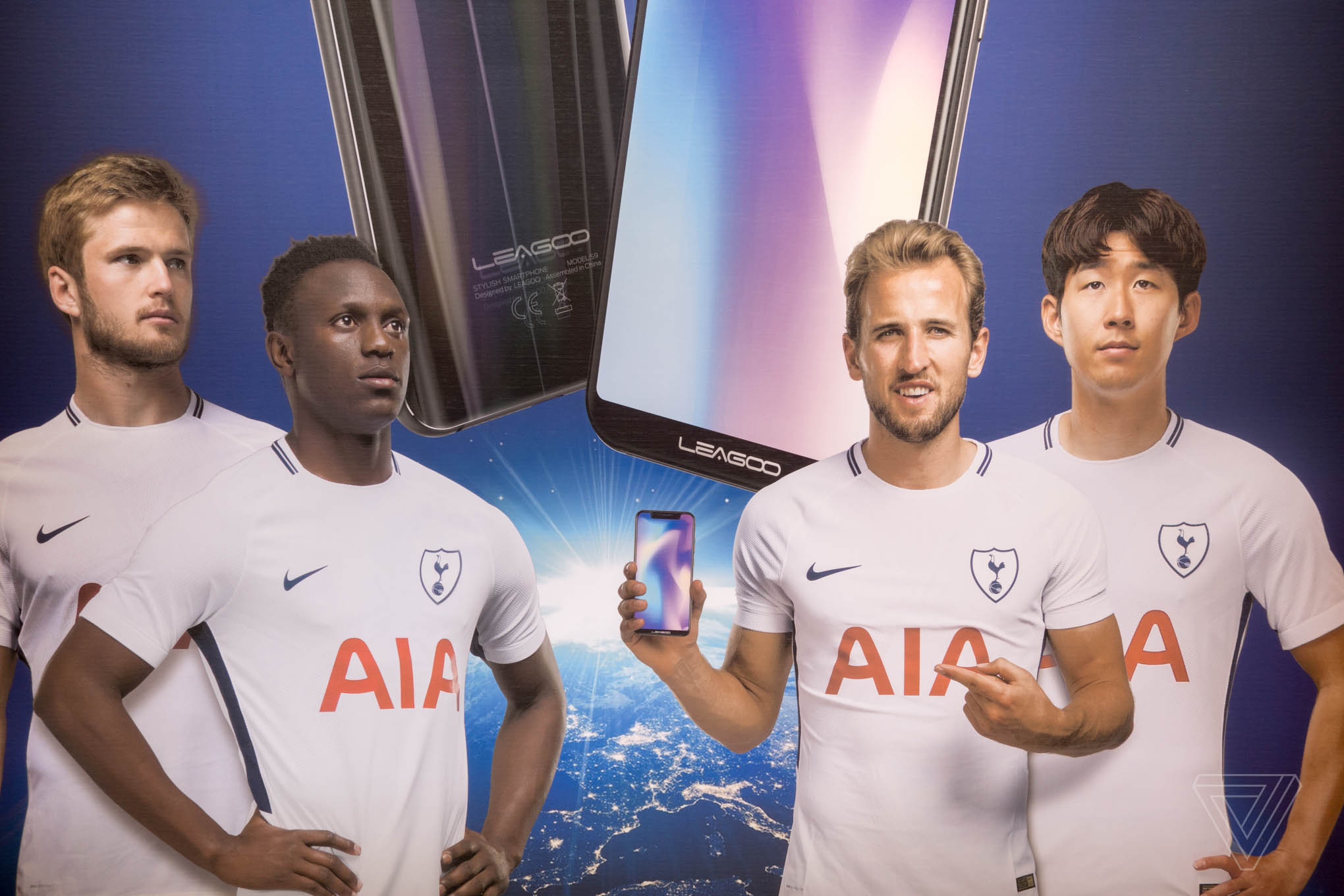The Clone Wars: iPhone X copycats battle for notch supremacy
Former Tottenham Hotspur soccer player Ledley King looked slightly sheepish as he pulled down the massive red curtain to reveal a new phone, and not just because it got stuck on a hook. And who could blame him? Behind the curtain was a picture of Tottenham's star lineup, including current Premier League top goalscorer Harry Kane with a pained expression on his face and an uncannily familiar phone in his hand.
Above Kane's head read the slogan: "Android Oreo Notch Display".
That's right: the notch is now a selling point. Kane's supposed phone, the Leagoo S9 Pro, is just one of a tide of iPhone X clones that have swept through Mobile World Congress this week, often from little-known Chinese manufacturers competing to get products out as fast as possible. Oukitel. Doogee. Blackview. UleFone. OtOt. Ila. The list goes on — and it's starting to include names more familiar to Western audiences. Asus' new Zenfone 5 takes obvious notch inspiration from Apple's latest phone, while leaks suggest that Huawei's next flagship will follow a similar path.

The iPhone X's notch was met with widespread confusion and derision when the phone was unveiled in September. So why are Android phone makers leaning into it?
Well, it's quite simple. "Some people will say it's copying Apple," Asus' global head of marketing Marcel Campos told The Verge, "but we cannot get away from what users want. You have to follow the trends." In other words, notched displays have officially transcended oddity to become just another screen shape.
Campos' comments may sound crude, but they're actually refreshing in their honesty. Because the simple truth is that these notches don't need to exist. They're a stylistic choice, and the latest example of Apple design decisions being co-opted by much of the tech industry at large.

Say what you like about the iPhone X's notch: if nothing else, it's an honest design. It's obvious why it exists. Apple set out to make a phone as dominated by the screen as possible, which meant removing the bezels, which meant removing the fingerprint sensor, which meant adding a 3D-sensing camera for Face ID. Which meant taking a considerable bite out of the screen. And Apple didn't try to hide the resulting notch — on the contrary, it advised developers not to disguise it in software.
These Android phones, on the other hand, are often making the notch much bigger than it needs to be. They don't contain advanced face-scanning tech — usually just a selfie camera, a speaker, and an ambient light sensor. The decision to go with prominent notches is one that simply would not have been taken were it not for the iPhone X.
We've been here before. Recall the last time Apple introduced a major new iPhone design, with the 6 and 6 Plus in 2014. It was surprisingly unlovely, even at the time — we noted that it was the first iPhone that looked better in a case. But if you've been to China in the last three years, it's impossible to deny that design's influence. The rounded corners paired with the mostly flat back. The plastic antenna lines. The jewel-like camera bump. Apple didn't invent any of these elements, but it's certainly responsible for the combination that companies like Vivo, Xiaomi, Meizu, and Oppo lifted wholesale. Apple was also responsible for teaching the world what a "chamfered edge" was with the iPhone 5, precipitating a wave of gadgets with similarly shiny extremities.
That's what's going to continue to happen with the iPhone X notch. And really, that doesn't have to be a bad thing. One product manager at a Chinese OEM told me that he likes the notch design as a way to maximize screen-to-body ratio, but wouldn't have been able to push it before the iPhone X made it possible for customers to "accept" such a product. And if reports are to be believed, Google is preparing the next version of Android to have formal support for notches, anticipating the flood of Apple-inspired devices.
Not everyone will follow, of course. Samsung, for example, has enough marketing clout of its own that copying Apple would do more harm than good at this point. This week's Galaxy S9 launch event saw the company hail the new phone's "uninterrupted display," with a marketing executive cracking "as always, you know, there's no notch." (No-one laughed.)

I'm not passing judgement either way on these notched phones. Times change, trends come and go, and this is just another example. There are some truly egregious rip-offs, sure, but some of the new phones actually look somewhat interesting. The UleFone T2 Pro, for instance, has a striking chrome and white design around its giant 6.7-inch 19:9 screen, which includes an in-display fingerprint sensor. It wouldn't exist without the iPhone X, no, but that doesn't render it meritless. (Even if its screen's rounded corners do cut into the clock right now.)
Apple has a habit of dominating trade shows without attending, and Mobile World Congress 2018 has been no exception. This week it's been impossible to escape the notch, with so many companies following Apple's suggestion that developers and users embrace it. Only one question remains: will you?